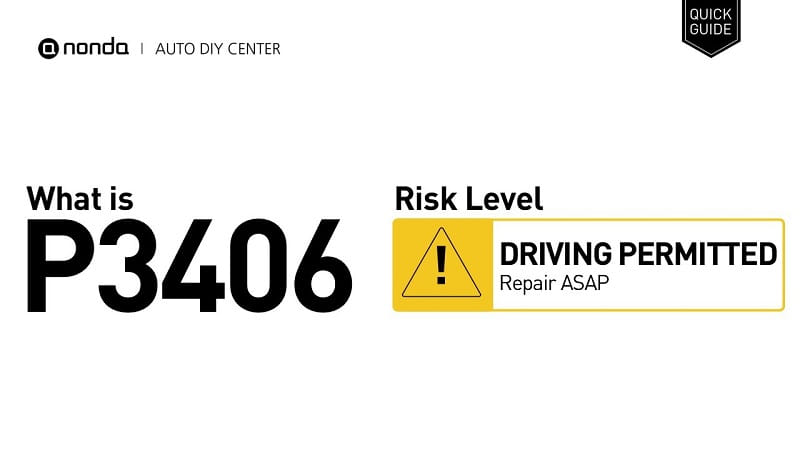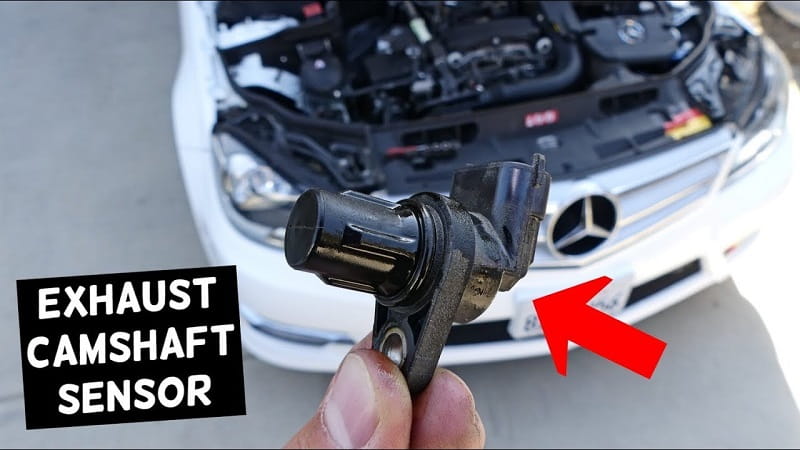This post contains affiliate links. This means I will make a commission at no extra cost to you should you click through and make a purchase [ “As an Amazon Associate, I earn from qualifying purchases.” ]. Read the full disclosure here.
Understanding P3406: Cylinder 1 Exhaust Valve Control Circuit Performance GuideMechanic.Com Modern automotive engines are increasingly sophisticated, featuring systems like Variable Valve Timing (VVT) and Active Fuel Management (AFM) that help optimize performance, fuel economy, and emissions. These systems rely on precise control of both the intake and exhaust valves through electronic and hydraulic mechanisms.
When something interferes with the expected behavior of these components, the engine control module (ECM or PCM) sets a Diagnostic Trouble Code (DTC). One such code is P3406, which indicates a performance issue in the exhaust valve control circuit for cylinder 1.
See Also: P3000 Manufacturer Controlled DTC
P3406 Cylinder 1 Exhaust Valve Control Circuit Performance
What Is DTC P3406?

The OBD-II code P3406 is defined as:
“Cylinder 1 Exhaust Valve Control Circuit Performance”
This code is set when the Powertrain Control Module (PCM) detects that the performance of the exhaust valve control mechanism for cylinder 1 is not within the expected range or operating conditions.
Unlike “circuit open” or “circuit high” codes, a “circuit performance” code indicates that while the circuit is intact, the component is not behaving as expected based on feedback data or internal logic.
This issue typically arises in vehicles equipped with Variable Valve Timing (VVT) or cylinder deactivation systems, which adjust exhaust valve operation depending on engine speed and load. A malfunction in this system can disrupt exhaust gas flow, affecting engine efficiency and emissions.
P3406 Cylinder 1 Exhaust Valve Control Circuit Performance
Key Components Involved
The P3406 code may involve one or more of the following components:
- Exhaust Valve Control Solenoid or Actuator (Cylinder 1)
- Variable Valve Timing (VVT) solenoid
- Cylinder Deactivation Solenoid (in AFM-equipped engines)
- Powertrain Control Module (PCM)
- Wiring and Connectors
- Oil Control Valves and Oil Passages
The PCM sends signals to the exhaust valve solenoid to advance or retard timing or to activate/deactivate the valve, depending on the driving conditions.
Common Causes of P3406
The performance code can be caused by any condition that prevents the exhaust valve system from functioning as expected. These include:
1. Faulty Exhaust Valve Control Solenoid (Cylinder 1)
The solenoid may be sticking, partially clogged, or worn out, which can hinder its function without completely failing electrically.
2. Oil Flow Issues
Since VVT and cylinder deactivation systems rely on oil pressure to operate, dirty, low, or incorrect engine oil can affect system performance.
3. Worn or Sticking Valve Mechanisms
Mechanical resistance in the valve train (e.g., due to carbon buildup or wear) can slow down or misalign valve actuation.
4. Wiring Problems
While the circuit may not be open, resistance or intermittent faults in the wiring or connectors can cause improper signal delivery.
5. Faulty Oil Control Valve (OCV) or VVT Actuator
The oil control valve that feeds the exhaust solenoid might be malfunctioning, affecting how quickly and effectively pressure is delivered.
6. PCM Malfunction or Software Glitch
In rare cases, the control module might interpret normal behavior as abnormal due to a programming issue or internal fault.
P3406 Cylinder 1 Exhaust Valve Control Circuit Performance
Symptoms of P3406

A vehicle experiencing the P3406 code might display various symptoms, including:
- Check Engine Light (CEL)
- Decreased engine performance
- Poor fuel economy
- Rough idle or engine hesitation
- Misfires in cylinder 1
- Hard starting or extended cranking
- Increased emissions
- Noticeable tapping or ticking noises
In some cases, the vehicle may enter a “limp” or reduced power mode to prevent further damage to the engine.
How to Diagnose P3406
Proper diagnosis of the P3406 code requires a step-by-step inspection process using specialized tools. Below is a general diagnostic procedure:
1. Use an OBD-II Scanner
Read all stored and pending codes. Note freeze frame data to understand the conditions under which the code was set.
2. Check Oil Level and Condition
Verify the oil level is within specifications and that the oil is clean and of the proper viscosity. Dirty or incorrect oil can severely hinder valve control system performance.
3. Visual Inspection
Inspect wiring to the exhaust valve solenoid for chafing, corrosion, or loose connections.
Look for oil contamination at connectors, which can interfere with signal transmission.
4. Test the Solenoid
Using a multimeter, check the solenoid’s resistance against manufacturer specifications. Then use a scan tool to command the solenoid on/off and verify that it responds.
5. Check Oil Control Valve (OCV)
Inspect and clean or replace the OCV if it’s clogged with sludge or debris.
Monitor its operation using scan tool data.
6. Camshaft and Timing Inspection
Use a scan tool to observe camshaft angle and timing values. Compare expected vs actual values to determine if the actuator is responding as expected.
7. PCM and Software
If all components are functioning but the code returns, a software update or PCM reflash may be necessary.
P3406 Cylinder 1 Exhaust Valve Control Circuit Performance
How to Fix Code P3406

After identifying the root cause, here are common repairs for the P3406 code:
Replace Faulty Exhaust Valve Control Solenoid
If the solenoid is sticking, clogged, or responding too slowly, replace it.
Change Engine Oil and Filter
Dirty oil is a common cause of valve performance issues. Always use the correct grade and manufacturer-recommended oil.
Repair or Replace Wiring and Connectors
If any wiring faults or loose connections are found, repair them with proper heat-shrink solder joints or factory-style connectors.
Clean or Replace Oil Control Valve
If the OCV is clogged, remove and clean it—or replace it if defective.
PCM Software Update
Check with your dealer or service provider for any Technical Service Bulletins (TSBs) or updates related to valve control software.
Replace PCM (if necessary)
In rare situations where the PCM is proven faulty after all other diagnostics, replace and reprogram it to match the vehicle’s VIN and configuration.
P3406 Cylinder 1 Exhaust Valve Control Circuit Performance
Preventing P3406
Many performance-related codes like P3406 can be prevented through proactive maintenance. Here are some best practices:
- Regular oil changes using manufacturer-specified oil.
- Avoid long oil change intervals, especially on engines with AFM or VVT.
- Use high-quality oil filters that trap sludge and contaminants effectively.
- Inspect engine wiring regularly for wear or corrosion.
- Address check engine lights early before small issues escalate.
Vehicles Commonly Affected by P3406
This code is most common in vehicles equipped with VVT or AFM systems. Some examples include:
- General Motors (Chevrolet, GMC, Cadillac) with AFM-equipped V8 engines
- Honda/Acura vehicles with VTEC or VCM (Variable Cylinder Management)
- Chrysler/Dodge/Jeep vehicles using Multi-Displacement System (MDS)
While symptoms and specific components may vary, the general diagnostic and repair principles are applicable across many makes and models.
Conclusion
The P3406 – Cylinder 1 Exhaust Valve Control Circuit Performance code signals that the PCM has detected abnormal performance in the circuit responsible for actuating the exhaust valve in cylinder 1. This is not an issue to ignore, as it can lead to poor performance, increased emissions, and potential engine damage.
Fortunately, with proper diagnosis—often starting with a simple oil change or electrical inspection—many causes of P3406 can be resolved without extensive repairs.
If you’re uncertain or uncomfortable with engine diagnostics, consulting a certified technician is always a wise choice.
- 4×4 Truck for Sale Used - October 21, 2025
- 4×4 Truck for Sale Under 20K - October 15, 2025
- 4×4 Truck for Sale QLD - October 12, 2025
